Abstract
An attempt was made to reduce the cigarette smoking of three subjects by means of a special cigarette case that delivered aversive shock when opened. The number of cigarettes smoked was recorded by a counter in the cigarette case. The validity of the counter readings as a measure of smoking was obtained by a specially designed participant-observer technique. It was found that the rate of smoking decreased as a function of the intensity of the shock. Also, the smoking returned to its previously unpunished level after the shock punisher was discontinued. Both of these findings confirm the results of laboratory studies of punishment of simpler responses and extends them to more complex responses in a naturalistic situation. Surprisingly, the duration for which the apparatus was worn also decreased as a function of the intensity of the shock. This finding reveals that this aversive shock technique produced avoidance behavior that prevents the technique from having extensive applicability for eliminating smoking. The same limitation may apply to the use of aversive shock for eliminating other undesirable behaviors.
Full text
PDF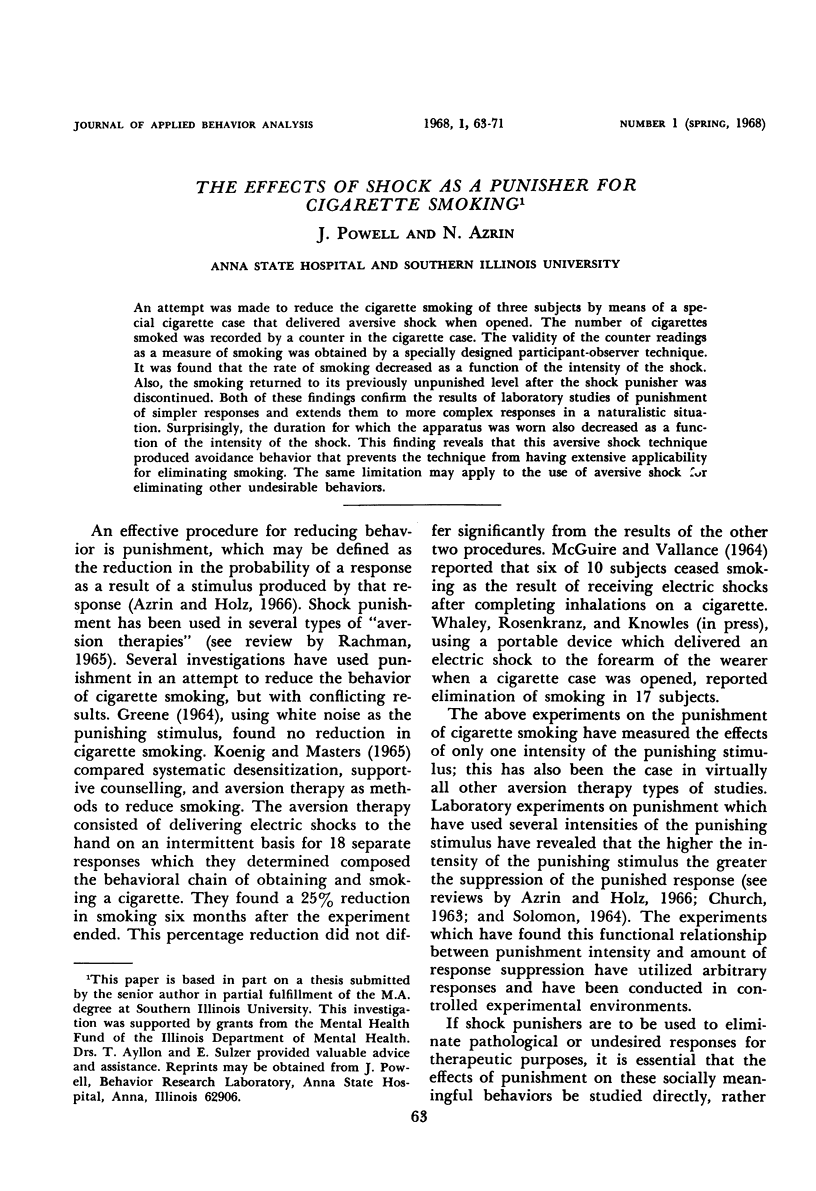
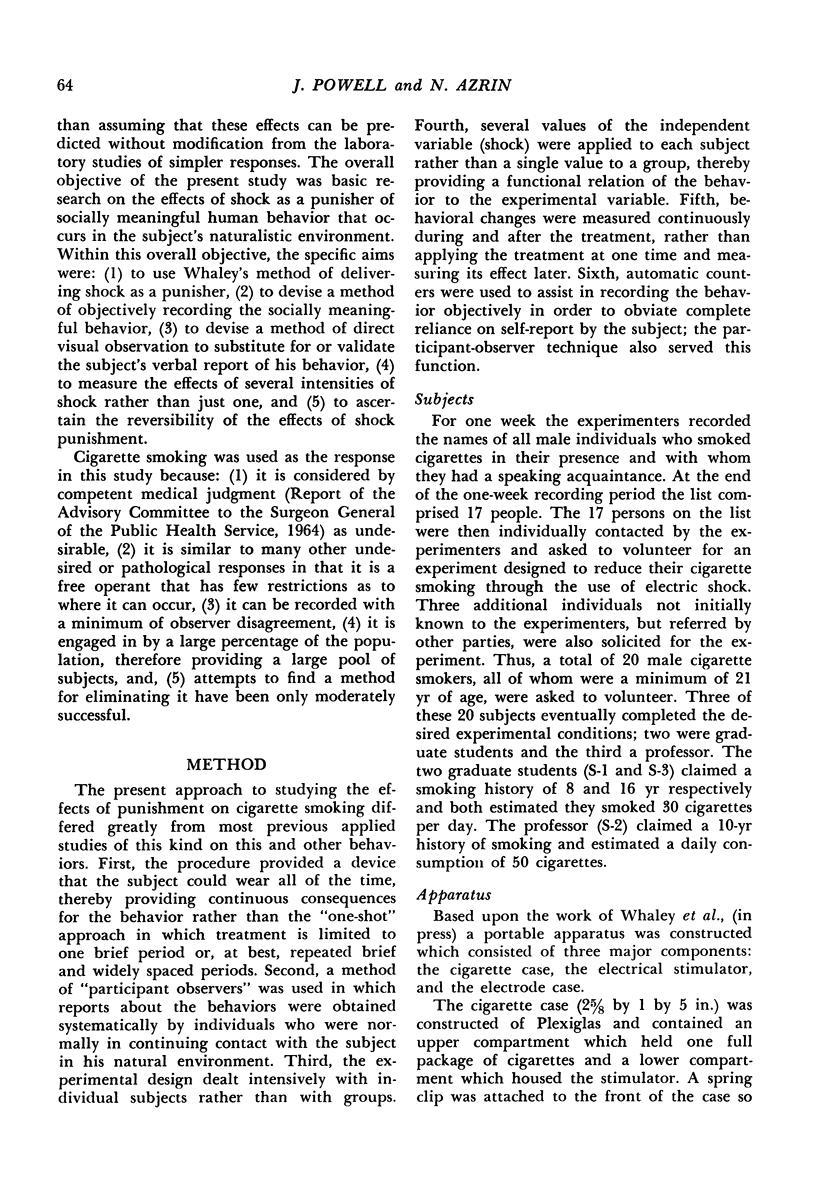
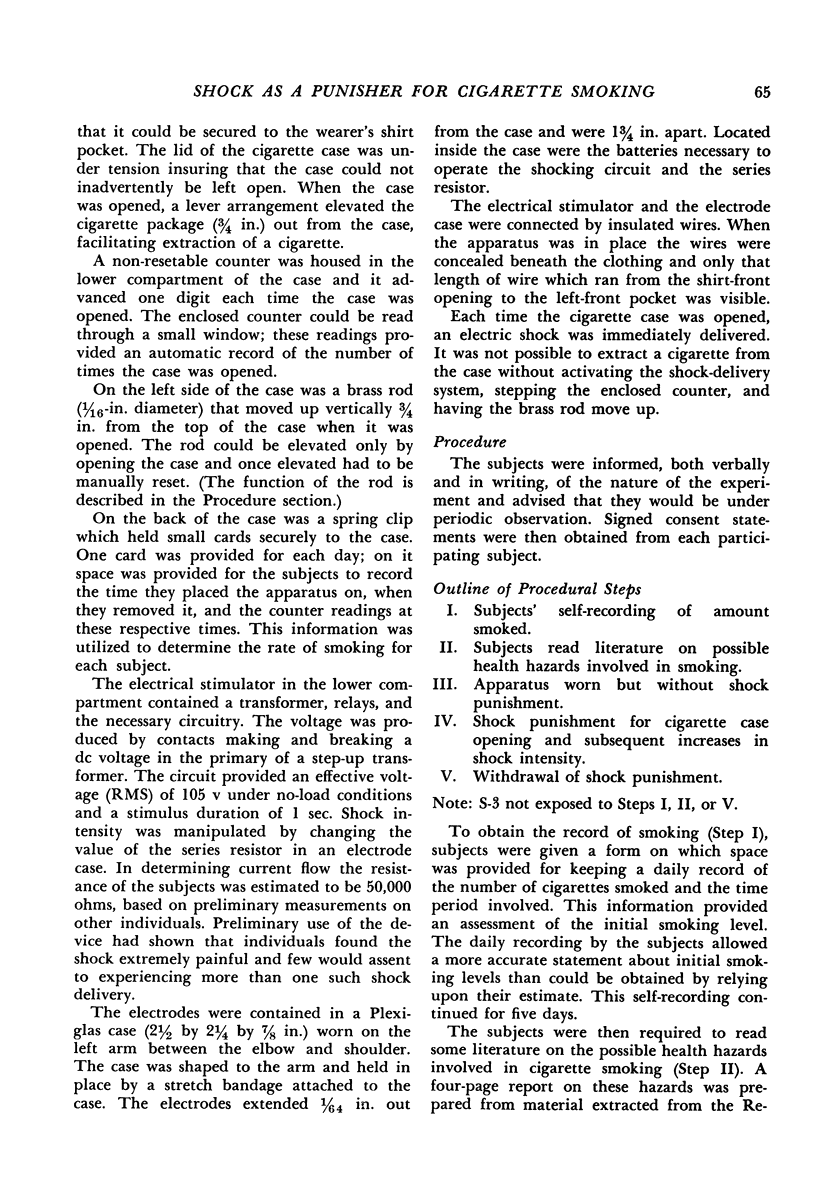
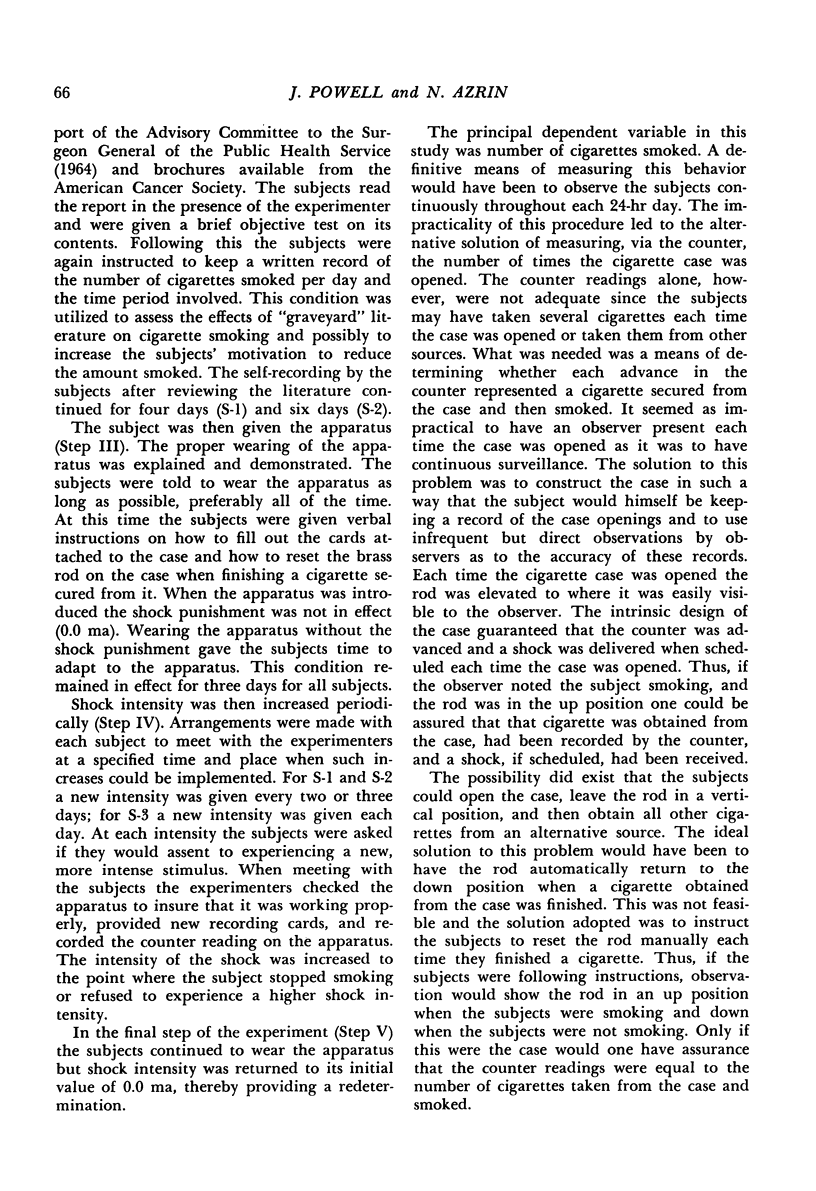
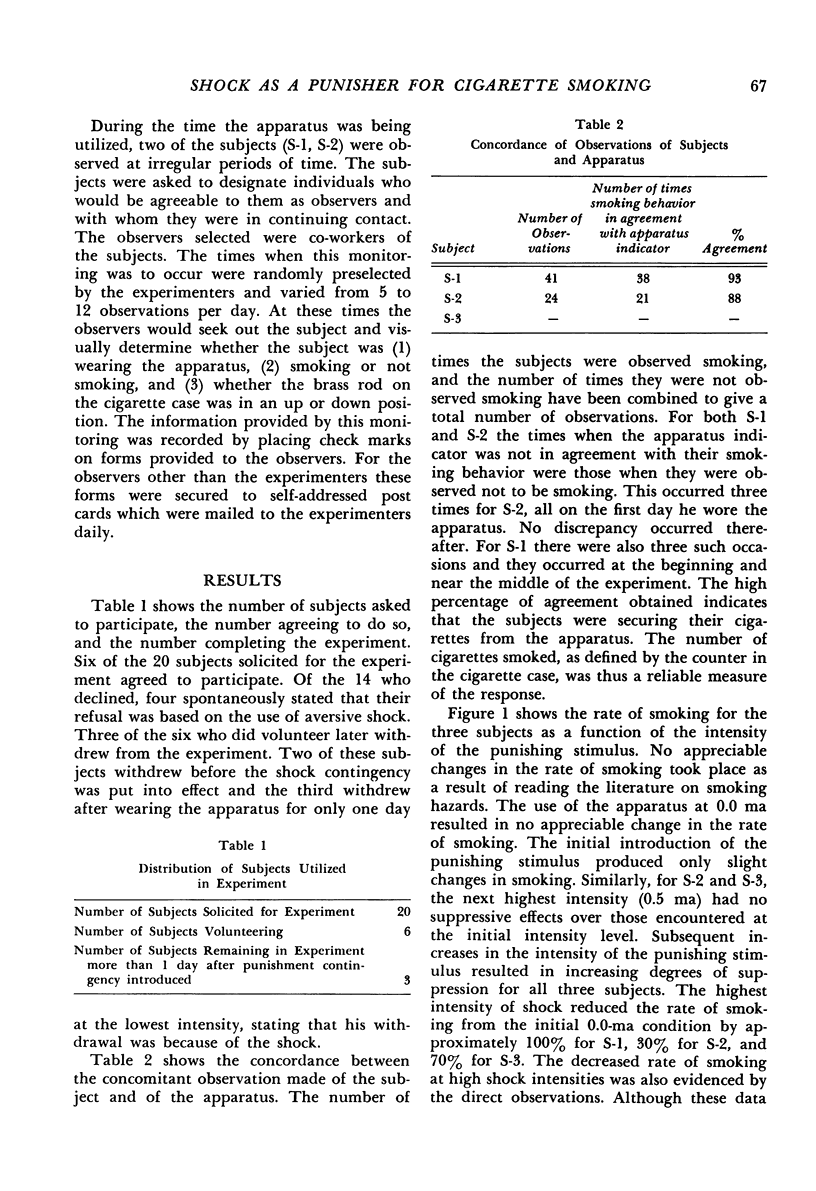
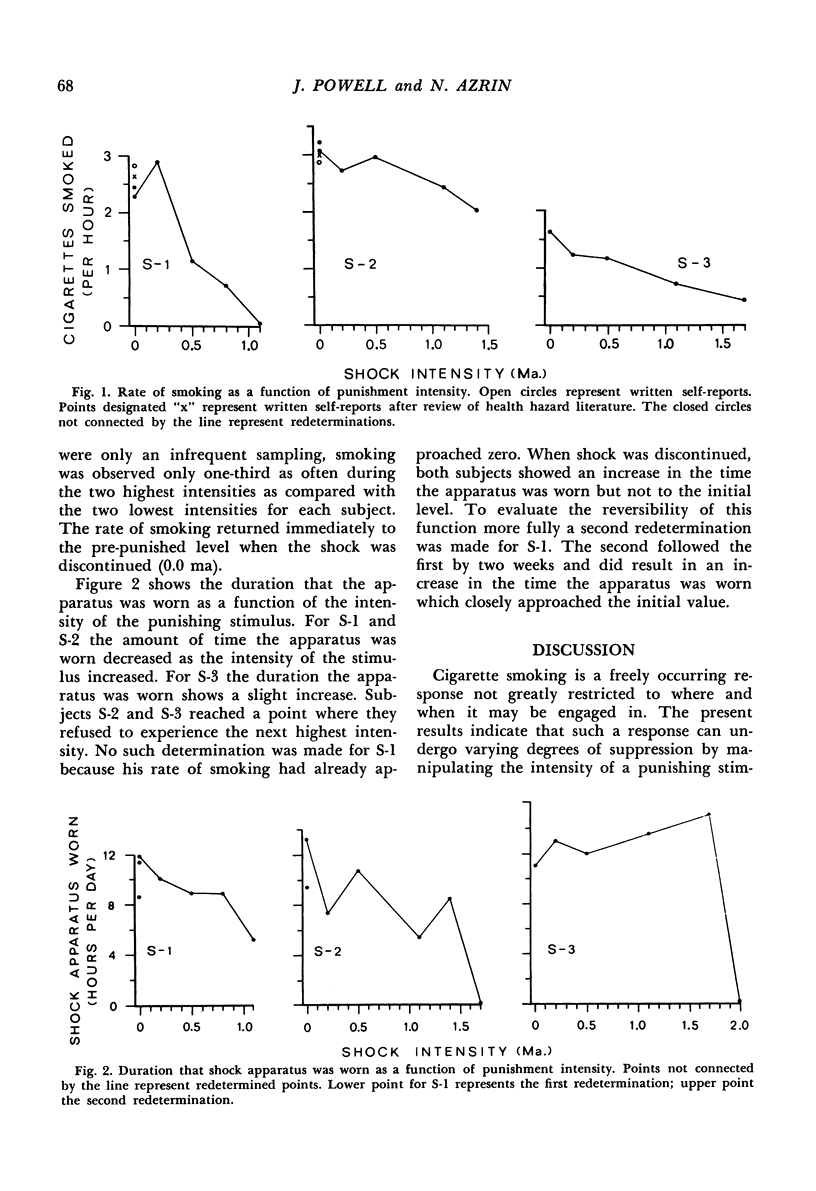
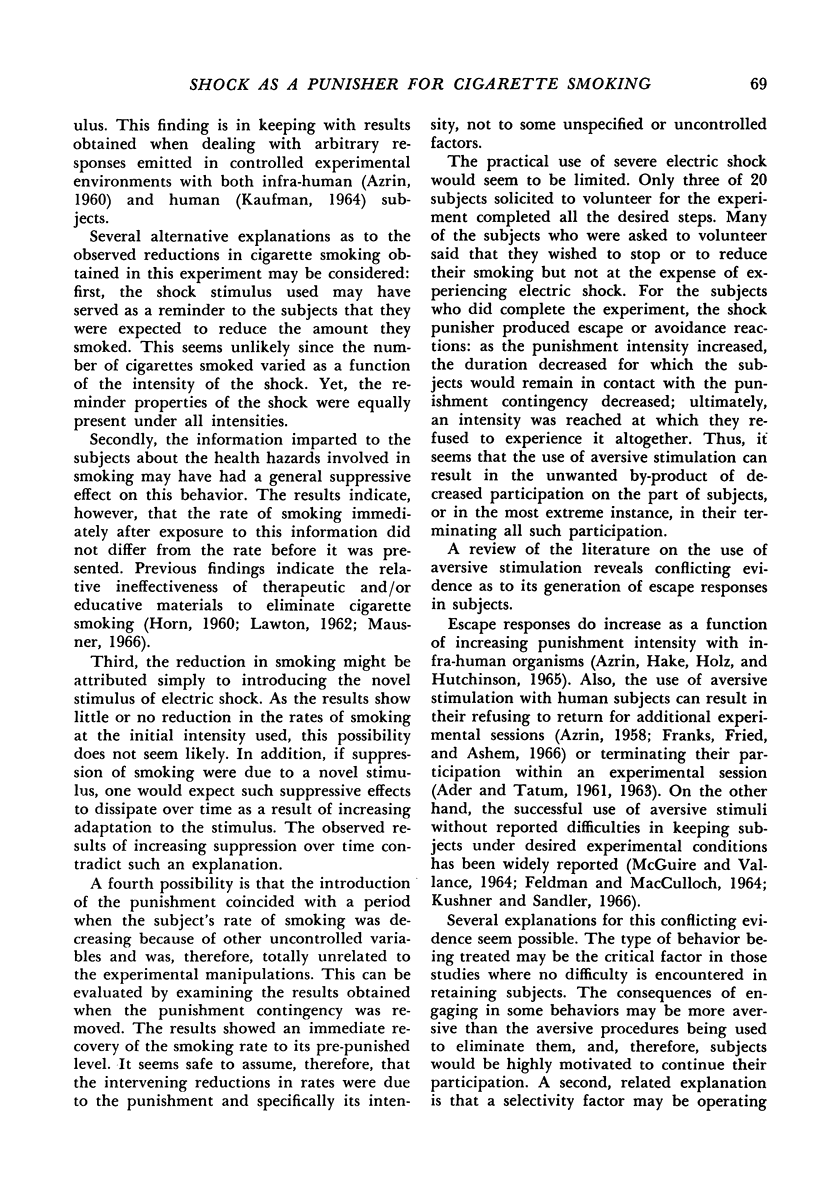
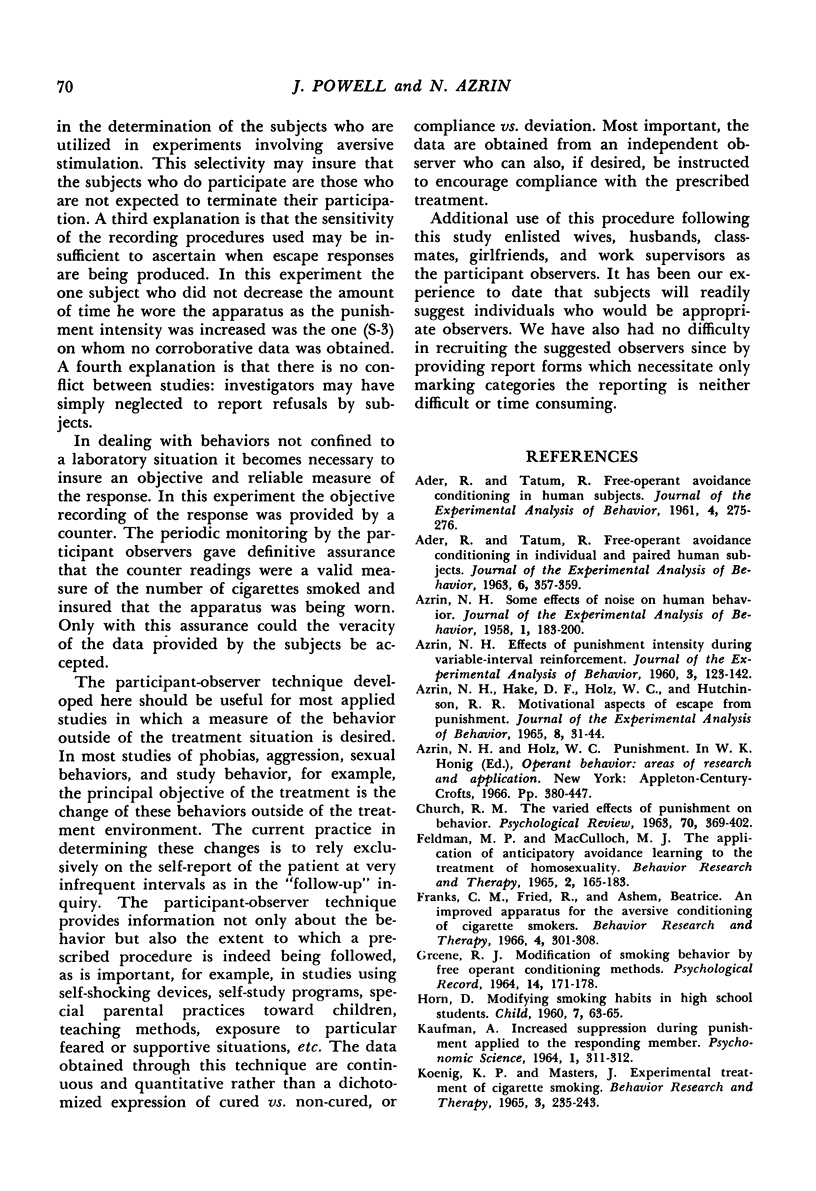
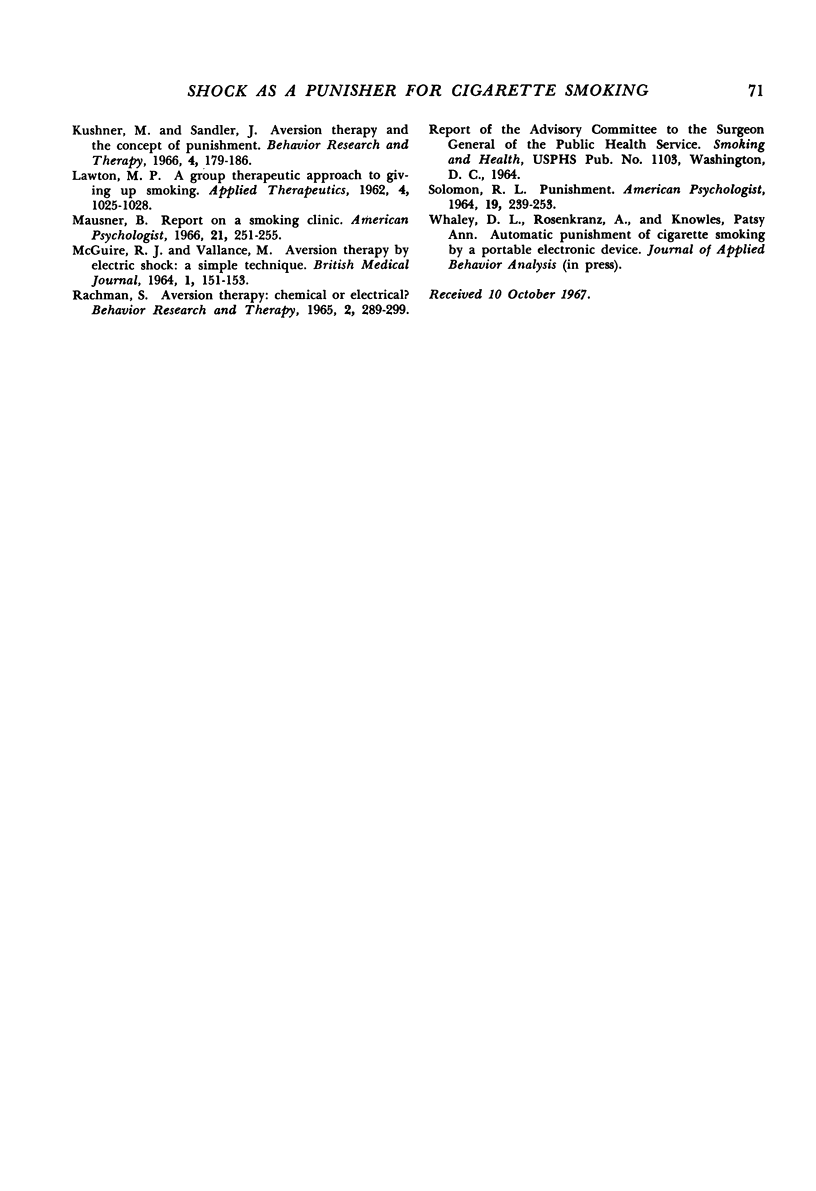
Selected References
These references are in PubMed. This may not be the complete list of references from this article.
- ADER R., TATUM R. Free-operant avoidance conditioning in human subjects. J Exp Anal Behav. 1961 Jul;4:275–276. doi: 10.1901/jeab.1961.4-275. [DOI] [PMC free article] [PubMed] [Google Scholar]
- ADER R., TATUM R. Free-operant avoidance conditioning in individual and paired human subjects. J Exp Anal Behav. 1963 Jul;6:357–359. doi: 10.1901/jeab.1963.6-357. [DOI] [PMC free article] [PubMed] [Google Scholar]
- AZRIN N. H. Effects of punishment intensity during variable-interval reinforcement. J Exp Anal Behav. 1960 Apr;3:123–142. doi: 10.1901/jeab.1960.3-123. [DOI] [PMC free article] [PubMed] [Google Scholar]
- AZRIN N. H., HAKE D. F., HOLZ W. C., HUTCHINSON R. R. MOTIVATIONAL ASPECTS OF ESCAPE FROM PUNISHMENT. J Exp Anal Behav. 1965 Jan;8:31–44. doi: 10.1901/jeab.1965.8-31. [DOI] [PMC free article] [PubMed] [Google Scholar]
- Azrin N. H. Some Effects of Noise on Human Behavior. J Exp Anal Behav. 1958 Apr;1(2):183–200. doi: 10.1901/jeab.1958.1-183. [DOI] [PMC free article] [PubMed] [Google Scholar]
- CHURCH R. M. THE VARIED EFFECTS OF PUNISHMENT ON BEHAVIOR. Psychol Rev. 1963 Sep;70:369–402. doi: 10.1037/h0046499. [DOI] [PubMed] [Google Scholar]
- FELDMAN M. P., MACCULLOCH M. J. THE APPLICATION OF ANTICIPATORY AVOIDANCE LEARNING TO THE TREATMENT OF HOMOSEXUALITY. I. THEORY, TECHNIQUE AND PRELIMINARY RESULTS. Behav Res Ther. 1964;2(2-4):165–183. doi: 10.1016/0005-7967(64)90013-0. [DOI] [PubMed] [Google Scholar]
- Franks C. M., Fried R., Ashem B. An improved apparatus for the aversive conditioning of cigarette smokers. Behav Res Ther. 1966 Nov;4(4):301–308. doi: 10.1016/0005-7967(66)90026-x. [DOI] [PubMed] [Google Scholar]
- Koenig K. P., Masters J. Experimental treatment of habitual smoking. Behav Res Ther. 1965 Dec;3(4):235–243. doi: 10.1016/0005-7967(65)90032-x. [DOI] [PubMed] [Google Scholar]
- MCGUIRE R. J., VALLANCE M. AVERSION THERAPY BY ELECTRIC SHOCK: A SIMPLE TECHNIQUE. Br Med J. 1964 Jan 18;1(5376):151–153. doi: 10.1136/bmj.1.5376.151. [DOI] [PMC free article] [PubMed] [Google Scholar]
- RACHMAN S., AVERSION THERAPY CHEMICAL OR ELECTRICAL? Behav Res Ther. 1965 Apr;3:289–299. [PubMed] [Google Scholar]


